Japan: A land I love but just don’t understand
TweetSorry for the lack of new material this month. I’ve been away, enjoying life in Japan rather than burning the midnight oil in my quest for world bicycle domination. Situation permitting Kyoko and I spend about a month in Japan each year to visit family and friends, see new places and do a little business. This time is P’s first trip to one of his two lands of nationality. I really enjoy my time in Japan, probably because even though it’s all quite familiar now, I still don’t understand much of it. Of course that’s largely a function of my poor grasp of the Japanese language; I follow a fair bit but speak barely enough for greetings and simple needs. But even if I were fluent in Japanese it’s unlikely I’d be able to understand this strange culture. Actually it seems the natives themselves often don’t have much insight into what makes things tick here. Below are a few examples. Have a look also through my Flickr photostream where I’ve posted hundreds of Japan photos already.
Obsession with cleanliness:
Japan is very, very clean and that’s obviously a good thing. Sometimes it seems a bit over the top though such as when I see men polishing the fire hydrants or shop salespeople on their hands and knees scrubbing the last scuff mark off the brilliantly shining tile floor. A couple times I’ve spotted teams of schoolchildren on class cleaning trips, all wearing matching, brightly colored hats as they collect what little trash there is to be found on the sidewalks.
But actually I was thinking more of the personal hygiene part of cleanliness; Currently many people are wearing face masks in all public places, apparently out of fear for the Mexican flu (called “new type of flu” here) from which 50 people have died. Kyoko and I estimate that 30% of of people are wearing face masks on the street, in public transport and in shops. Stores, malls, restaurants and all public restrooms have hand sanitizing stations with special antibacterial spray. In the drugstores entire displays are devoted to products for anti-flu sanitizing.
One sanitary thing I’ll admit to loving is the toilets. Few toilets are not equipped with at least a heated seat and a “wash-let” comprising a high pressure nozzle electronically aimed at either your back- or front- bottom. These are operated by a little control panel on your right side (when sitting). Beats the heck out of toilet paper! But wait, there’s more: The latest models enable you to never touch the toilet with your hands. Even raising and lowering the cover and seat, and flushing are accomplished electronically via the control panel. Of course everything can be adjusted: pressure and temperature of the water, heat of the seat etc etc.
Car culture:
Why are there so many super fast cars on the highly speed restricted roads of Japan? Mitsubishi Lancer Evo’s, Nissan Skyline GTR’s, Subaru WRX’s and outrageously modified mini-autos I can’t even identify are everywhere. Every car nut knows what these are but for the unfamiliar I’m talking about some of the world’s most sophisticated speed machines, capable of reaching highway speed limits in a few seconds and capable of top speeds more than three times the 80km/hr national highway speed limit.
At first I figured I’d find these guys racing around in the mountainous roads each weekend, “Fast and the Furious” style, but now I’ve spent a lot of time in rural areas all over Japan and have yet to see a single car or motorcycle exceeding the (low) speed limits. Besides the sports cars practically all of the cars in Japan are quite new and in great condition. Aside from some classic models (old Austin Minis are currently hyper popular) there are few older cars to be seen. The only thing clear to me about all this is that the Japanese generally love their cars and attach a fair amount of status to them. In this sense (and quite a few others) Japan reminds me of the USA.
Normally such a strong car culture would be an indicator of a highly privatized, conservative economy and politics, and investment in public transport is the mark of a “social” economy. So how do we reconcile the japanese love of private cars with their fantastic public transport system here? Trains and metros are so perfect here that they’re fun. The metro systems are not only extraordinarily extensive, they’re also perfectly clean and nearly always equipped with good working elevators and escalators. Only the oldest stations aren’t so equipped. Getting around with a child in a stroller and often our baggage has been no problem at all.
While the metros are efficient, Japan has the only train system in the world that makes the Dutch trains look lame. The Dutch trains might not be pretty or terribly clean but they go practically everywhere and almost always right into the center of the city where you need to be. Swiss and German trains are prettier but they don’t always go where you need to be. Japanese trains, though, are in another class. They seem to run perfectly on schedule. There are always staff available to provide information. Teams of women dressed in pink uniforms roam through the trains cleaning. Like all staff they bow upon exiting each car.
Like elsewhere Japan has different types of trains, from quaint, historic trains that slowly wind their way through the mountains to the 300km/h Shin-kan-sen “bullet” trains. We’ve had some amazing riders on single car diesel trains that ride through areas inaccessible by any other means. Other countries also have fast trains but the Shin-kan-sen is different in a number of ways, most notably that it actually goes really fast all the time, including through the cities. As a result they cover the large distances between cities remarkably quickly.
Unattractive cities:
Yeah, you’ve seen all these images of ancient shinto shrines, tranquil rock gardens and wooden row houses with perfectly ordered tatami rooms just like in the movies. Those do exist and I’ve been to many beautiful spots in Japan; they’re mostly in rural areas and a few historic spots in cities.
However the developed areas are largely quite ugly on many levels; The architecture (apartment buildings for example) is generally quite depressingly modern, uninspired and grey, not particularly east or west… just ugly. The sky is usually littered with amazing collections of cables to serve the equally amazing high-tech infrastructure.
Bridges and other civil structures are purely functional, much like in the US. There’s little green or park space in the cities though Tokyo is a notable exception in its greenness. Unlike in European cities where the residents are often quite conscious of preserving historical elements, history is relatively difficult to find in Japanese cities. There is a beautiful castle in most cities (usually surrounded by a park), shrines tucked away behind shopping malls and a couple old ramshackle houses in the shadows of concrete apartment blocks and that’s about it. There are some partial explanations for this: A. Japan is an earthquake zone so buildings must be seen as fairly temporary. B. Older buildings were almost all wood (see A) which just doesn’t last forever.
In all fairness Japanese cities are great at night if you enjoy the hyper-urban-neon Blade Runner experience. In the dark you only see the incredible conglomerations of bright displays, wacky sci-fi buildings and masses of people.
Bike infrastructure (or the lack thereof):
Compared to most of the industrialized world there are a lot of cyclists in Japan. Of course that’s not saying much with bike modal share hovering around zero in most of the world. Given the densely populated cities, car traffic, high costs of car ownership and generally fit population transportation it should be a no-brainer to get the Japanese cycling en masse. But it’s not: There is almost NO cycling infrastructure in Japan aside from parking facilities.
Cyclists are treated as pedestrians and most cyclists ride, or rather paddle along feet on the ground, on the sidewalks. Cyclists dodge pedestrians, baby carriages, vendors and loading trucks much of the time. Even when areas are designated for pedestrian and cyclist there is little lane diligence. Each cross street means carefully checking for cars turning into the street, dropping down from the sidewalk, crossing and going back up to the sidewalk. In the quiet neighborhoods (where there are no sidewalks anyway) everybody rides in the street, and this is where you see the most cyclists.
As a result cycling just isn’t pleasant or convenient in much of Japan. The car roads are narrow, heavily trafficked and often have no margin (where cyclists often ride in other countries). At the same time cycling on the sidewalk just sucks; It’s frustratingly slow and minor accidents and incidents are common. I regularly see near collisions (and probably real collisions) between sidewalk cyclists and both other sidewalk users and cars at the street crossings. As a result there are basically two types of cyclists in Japan: Sidewalk riders and road warriors.
The sidewalk riders are mostly kids, women and older men. They seem to have resigned themselves to not getting very far very fast. I’m guessing most don’t leave the neighborhood. These folks ride either standard issue Japanese city bikes with the seat at its lowest position, “mama-chari” child carrier bikes with the seat at its lowest position, or cheap, Chinese made department store bikes with the seat at the lowest position.
The road warriors look just like the “cyclists” in most of the non-cycling, industrial world: Young men outfitted for battle with helmets, glasses, special clothes, courier bags and other gear. They ride road racing bikes, mountain bikes or fixies and are mostly seen in Tokyo. I’ve seen few road warrior cyclists in other cities. The only difference between the enthusiast “commuter” cyclists in Japan and elsewhere is the locks. Here in Japan only the most minimalist lock is necessary: a tiny chain, aluminium U-lock or string thick cable seems to be sufficient. Locking your bike to a fixed object is clearly optional. Of course Japanese cyclists complain about bike theft but I hardly ever see a decently locked bike. Oh, and worth noting is the latest rage for decorating locks with covers.
Perhaps because of this strange dichotomy in cyclists and the generally nonexistent infrastructure the cycling behavior is highly random. When on the street an alarming number of cyclists ride against the auto traffic “bike salmoning” as Bike Snob coined the term. Sidewalk cyclists ride left right or in the middle wherever there’s an open space and cross streets either in the pedestrian or bike area as convenient. Of course pedestrians do exactly the same.
I also get the feeling that the terrible infrastructure is limiting the popularity of cycling tremendously. It’s clear that people want to cycle for transportation but that the government, apparently heavily lobbied by the powerful auto industry, refuses to accommodate cyclists. As a result you have 10 lanes of car traffic, car parking facilities talking valuable space in the cities… and cyclists bumping into pedestrians on the sidewalks. It’s totally absurd yet those I’ve spoken to see no light at the end of the tunnel.
Cycling culture:
In my three month-long trips to Japan I’ve been to a variety of cities (and rural areas too): Tokyo, Hiroshima, Kyoto, Osaka, Kumamoto, Hakata, Kagoshima, Nagano and Yakushima. Only in Osaka and Kyoto are there really large numbers of cyclists. Osaka is a fairly flat large city with a young population and the home of much of the Japanese bike industry: Shimano, SunTour and Araya are amongst the well-known firms in Osaka. Nishiki is in nearby Kobe. Kyoto isn’t as flat but it’s a university town with tens of thousands of students and young families, and it’s one of the few cities that has maintained many older buildings and neighborhoods. As a result there are many smaller streets to cycle on.
Not only are there many cyclists in both Osaka and Kyoto, it’s clear that the cyclists are riding with a greater sense of pride and having fun. Elsewhere in Japan cyclists mostly seem to be doing so for lack of better options. They’re not having fun cycling. In Osaka and Kyoto it’s better; I frequently see cyclists with passengers (though it’s illegal here), holding umbrellas (also illegal) and carrying large loads (illegal to ride with one hand… I’m not making this up!), groups cycling to the bars at night etc etc. Given decent roads to ride I’m sure these places would absolutely explode with cyclists.
When I return to Holland I post more about our Japan experiences.

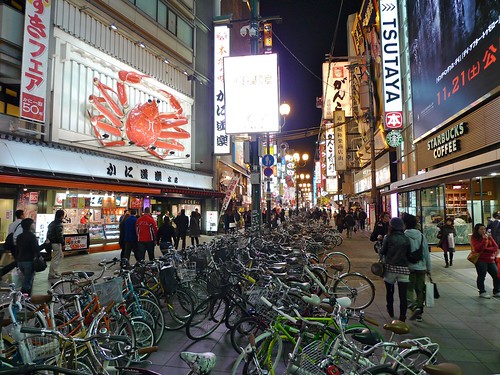

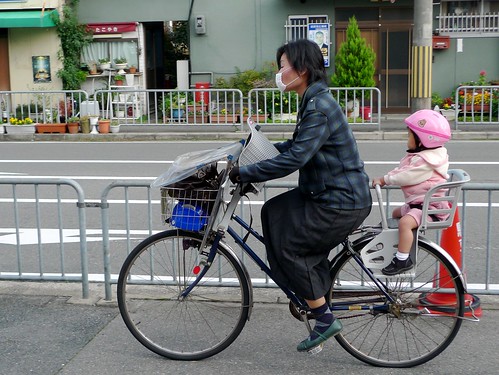

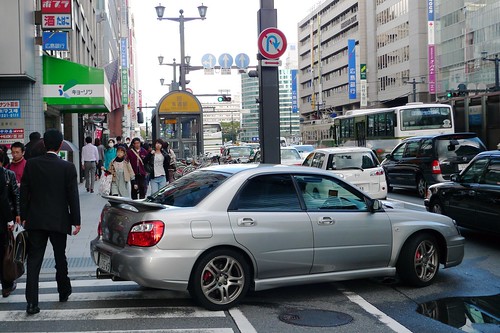
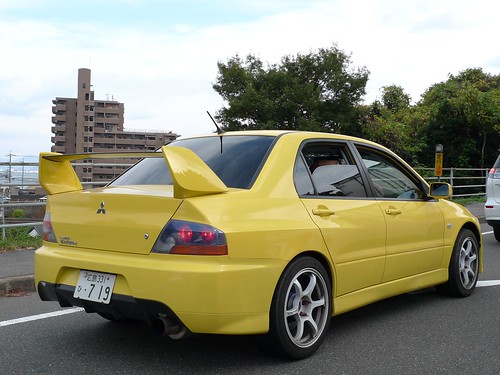
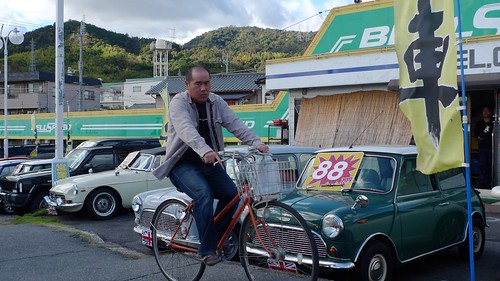
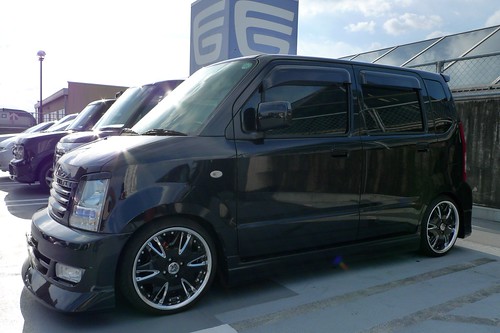


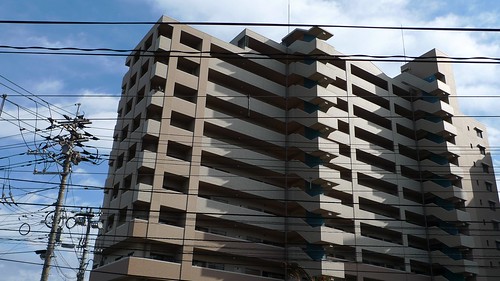
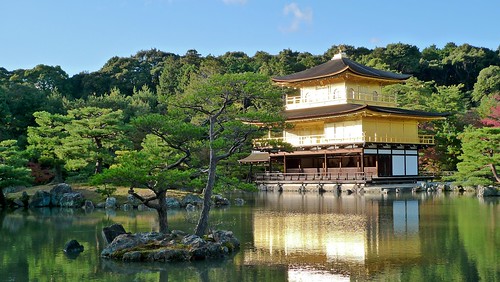
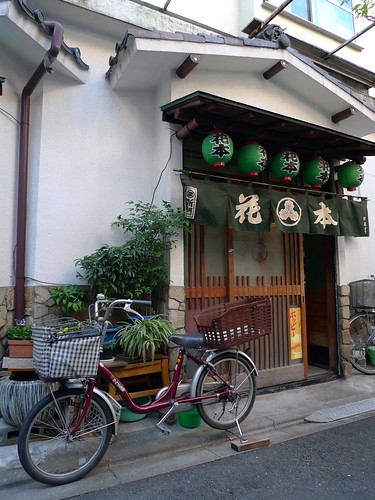

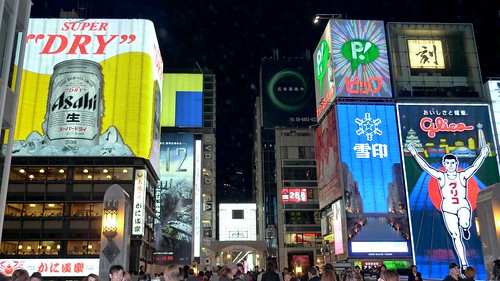
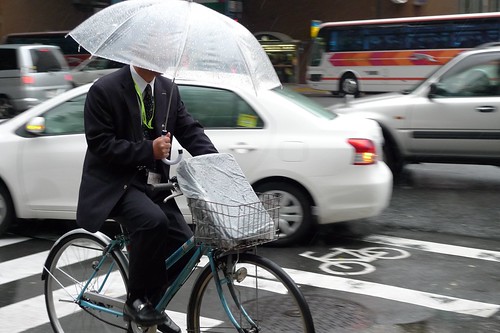
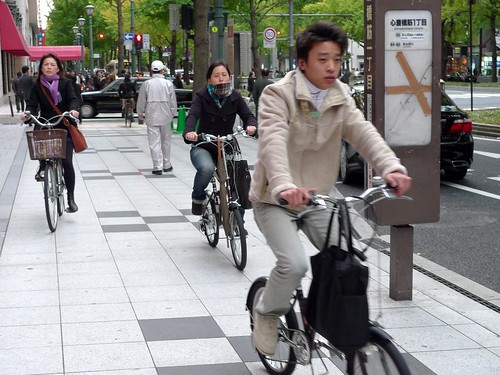
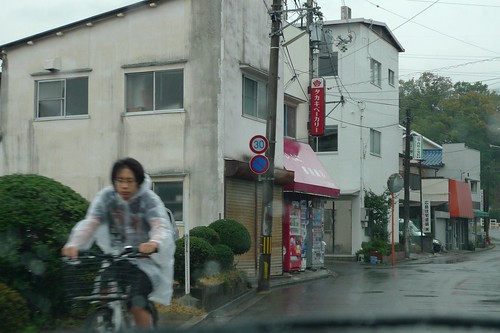
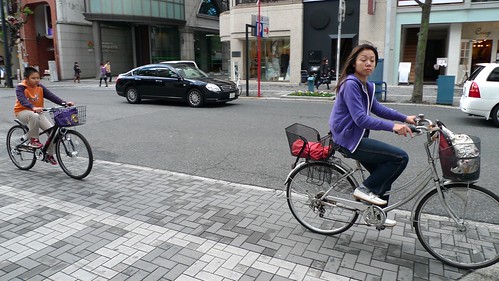
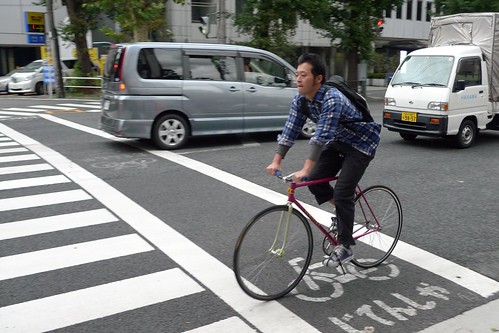
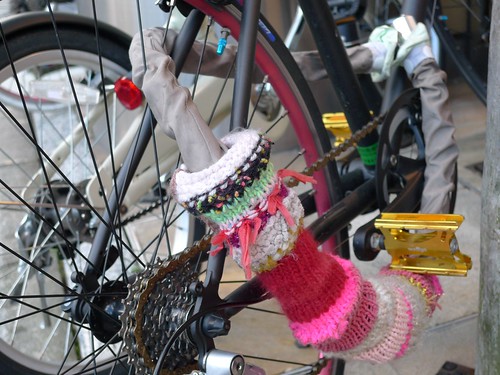
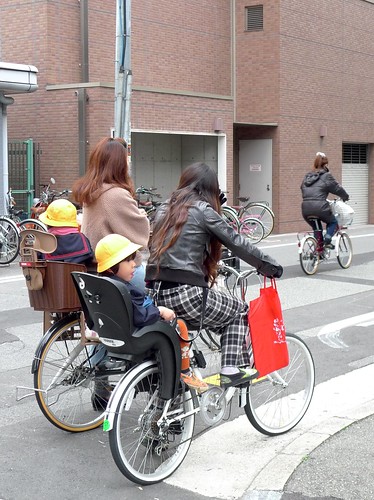
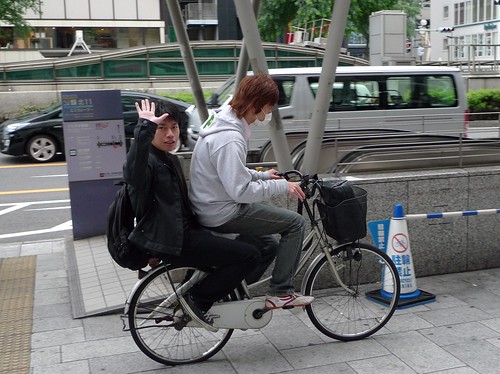

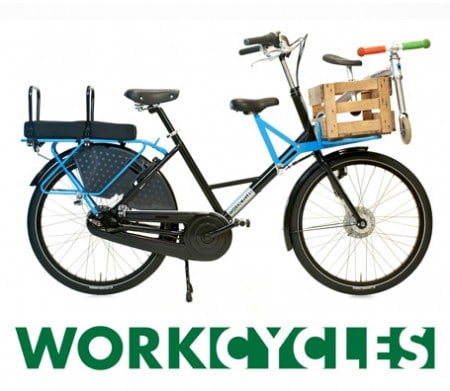
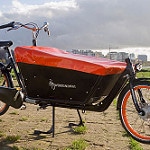















November 20th, 2009 at 06:05
Thanks for the rundown on Japan.
Where in the U.S. did you live?
November 20th, 2009 at 14:23
Steve,
I was born and raised in NY and also lived in VT, CO and CA. I moved to the Netherlands in 2000.
November 20th, 2009 at 21:49
I’m looking forward to more about Japan. It’s a fascinating place that I’d love to visit myself… but probably never will.
November 21st, 2009 at 01:37
David,
Japan is fascinating on a number of levels: the objects, places and customs unfamiliar to us, the amazing courtesy and service, the fantastic food. However I’m very fortunate to have a personal tour guide with an entire network of friends and family throughout the country. Thus I have access to many things that most travelers might never find. That said the independent tourist in Japan will collect another set of interesting experiences. Navigation off the beaten path, for example, would be a challenge that would require interaction with many strangers… certainly leading to many interesting experiences.
November 21st, 2009 at 14:35
Interesting. Regarding the car culture despite good public transportation, it seems many people think everything is made better by putting an engine on it.
One thing I learned from Finland is that in small households, you can have a \dripping cupboard\ above the kitchen sink. So when you do the dishes, you put them dripping wet straight into the \dripping cupboard\, without having to dry them.
In neighboring Sweden however, small households prefer a small dishwasher which takes up about 50 cm of counter top space. For just one or two people, it hardly saves you any time or labor. You still need to fill and empty the machine. Many times people will rinse the dishes before putting them in, and dry the last drops before putting them in the cupboard.
November 21st, 2009 at 15:12
Erik,
You’re probably on the mark about everything having to be motorized in Japan; it’s absolutely a technology oriented culture now… every problem (and non-problem) is attacked with tech-heavy “solutions”. Sometimes they’re brilliant but often they’re absurd.
I stayed in an apartment in Spain (Andalucia) that had exactly the dripping cupboard you describe. I thought it was so brilliant that I vowed to build one as soon as I owned my own home. Meanwhile five years later I’ve been so busy starting and building a company and a family that we’re still living in the same (nice and cheap) rental apartment. So we mostly just put the dishes in the (normal) rack after washing them and don’t bother putting them in the cupboard unless we need more space in the rack.
November 21st, 2009 at 15:29
I asked where you lived because I wanted to know what segments of American car culture you’d be familiar with. Enough that I don’t need to mention any more of it!
I like Erik’s metaphor about dishwashing (low versus high tech). My sister and I lived together for a year; she washed her dishes in the dishwasher (thankfully waiting until it was full), and I washed mine by hand. Many times we would run out of clean dishes because we would be waiting for the dishwasher to be full before running it, so we’d have to pull dirty dishes out of their and wash them by hand regardless.
Weird.
November 21st, 2009 at 15:39
Steven,
I also happen to be a total gearhead. I love not only bikes but also interesting cars, motorcycles and other machines. I just know that there are far too many cars and our societies rely on them much too heavily, and that popularizing bikes and public transport is better for everyone… except those who profit from selling cars and the related products.
I’ve never been a dishwasher fan though I suppose if you’ve a large family it might be very practical. I still imagine it must use more water and energy than properly washing the dishes in a double basin sink. In any case I much prefer the challenge of designing the kitchen as an efficient and largely manual workstation. In the case of cleaning the dishes this means: nice, big double sink, efficient water heater, dripping cupboard etc.
November 21st, 2009 at 16:29
Those toilets sound pretty cool though. I wonder if you can buy them here.
They would be even more hygienic if they had motion detectors, so your hands don’t have to come into contact with the toilet at all 🙂
November 21st, 2009 at 16:40
Erik,
Funny you mention that; yesterday I used a toilet that seemed to have exactly that – a motion sensor that raised and lowered the seat as needed. Problem was I was trying to change a baby’s diaper on the closed toilet seat (the only suitable place in the tiny restaurant) but each time I tried to set Pascal down the seat cover would go up. Sometimes technology backfires in unexpected ways.
November 21st, 2009 at 16:43
I’ll add that the old-fashioned japanese toilet avoids all contact except for the flushing lever. It’s basically just a plumbed porcelain hole in the floor.
November 21st, 2009 at 17:28
Henry – giggle! Hope you and Pascal were able to cope.
In the movies, the hero/heroine is often able to overcome nefarious technological restrictions by pressing a big red override button. Maybe that’s one of those things where today’s fiction may inspire tomorrow’s hi-tech!
Regarding car culture, there was press coverage last year about Japanese youth not wanting to buy cars. Apparently car ownership in Japan peaked in 2001. Is that something you can see on the streets?
AP: Toyota Opens Mall to Boost Japan Sales
Fortune: Nissan exec: Car culture is fading
Wall Street Journal: Japans Young Won’t Rally Round the Car
Japan Times: Car industry hitting the bumps as wheels lose their cachet of cool
Note this last headline: ‘wheels’ obviously means ‘car’, not bicycle, skateboard or metro!
November 22nd, 2009 at 02:05
Erik,
If only all complicated products had a sort of “red button to get you back to some “safe” state. Products would be far less scary and would encourage users to explore and better learn how to use them… but that’s my former line of work: interaction design.
I believe the statistics but I don’t know Japan well enough to have a meaningful opinion whether car culture is fading in Japan. Bicycle culture, in any case, isn’t exactly exploding. I see more cyclists in Osaka and Kyoto but that’s about the only real development I can see as an outsider. Talking to bike industry people hasn’t uncovered any other trends either.
November 24th, 2009 at 20:03
Have you heard about this?
https://www.tucsonbikelawyer.com/biking-in-japan-where-the-car-is-always-at-fault/
I’ve never heard of a dripping cupboard until now. I want one. The plastic drip tray I have gets covered in icky mold because it doesn’t drain very well (the rise is like .25 inches over 12 inches).
November 27th, 2009 at 08:16
Nice article. I live in okinawa and don’t know the mainland all that well. I’ve seen articles about Japans bike culture but always wonder how it compares with the dutch and danish infrastructure, your article hit the nail on the head and answered most of my questions.
And Okinawa? Wall to wall cars (in heavy rain, being 2 hours late for work is considered fairly normal). I feel like I’m the only work-age human on the whole island who rides a bicycle for transportation.
And I really want one of those dripping cupboards, anyone know what they are called or know of a link so I can see a picture?
December 3rd, 2009 at 03:45
From reading other blogs, I was under the impression that Japan has a high cycling rate. Perhaps they were reporting from Osaka, or Kyoto. So thanks for the overview of the entire country, not just from a particular city.
Since Japan has a strong national identity, maybe the public/private division isn’t as pronounce as it exist in the west. Many years ago, I saw a program about the corporate culture in Japan. If I remember correctly (questionable), the show portrayed working for a corporation similar to joining an extended family. If true, the public/private dichotomy as we experience it might be unfamiliar to someone in Japan.
The division seems to lie between high and low-tech devices, from what you describe. Fast cars and trains have more in common than with its low-tech counterpart, the bicycle. This might help explain its low popularity and abundance of low value department store bikes.
Also, nice observation about the lack of infra (structure) and random cycling behavior. I know its certainly true in the suburbs of Connecticut.
December 6th, 2009 at 05:47
Lovely post, but what (unfortunately) resonates with me is the toilets. My cycling mates and I have been obsessed with finding an arse-washing toilet in one of the multitude of Japanese/sushi restaurants popping up around Ballard (Seattle). So far, no luck, but local mythology has it that Shiku has one in the ladies room. And I wouldn’t rule that out.
A friend of mine was traveling to Japan on business and had an unfortunate encounter with a toilet at his boss’s boss’s house. Seems the controls were all solid-state buttons on the side, and not labeled in English or any sort of international pictogram, so he went for the largest button. Resulting in getting sprayed down face to belt with the bidet function.
And now, back to talking about bike rack crates.
December 6th, 2009 at 10:53
Julian, I’m so in love with “washlets” that I’m considering getting one for our own home. I haven’t yet investigated whether there are 230V versions. Probably yes, made for other Asian markets. That was the story with our fantastic induction heated Zojirushi rice cooker.
I too, made that mistake in my first encounter with a washlet. Fortunately I had the rare peace of mind to just put my hand over the (quite powerful) spray while testing the various buttons to find “off”. You only make that mistake once.
Speaking of crates, I found perfect crates in one of the amazing japanese home center stores: nicely made wooden crates in a broad range of suitable sizes for the equivalent of about €10-15.
December 6th, 2009 at 15:21
Henry,
Check out https://www.i-zen.net/html/e_product03.html
It costs about 300-400€ in Israel
I guess you can find one in Europe.
December 8th, 2009 at 14:30
I lived in Tokyo for 8 years between 1991 and 2006. In relation to cars, people do drive them quickly on the highways – it was common on the Chuo Expressway for the road to be signed at 80 km/h, for everyone to be doing 100 – 110 km/h and for people to be blasting past at 140 km/h plus.
I never saw anyone pulled over and only knew one person who got caught in a speed-trap – and the place where he paid his fine gave him a map showing where the speed cameras were so he’d know where to slow down the next time.
The speed of traffic in Tokyo depended upon how crowded the place you were going to was and I could never pick any pattern to it – that said, I then moved to London and then to Melbourne, and of the three I think Melbourne has the worst traffic.
I don’t agree about the Japanese not cycling en masse – bike parking was a major problem around every subway station I used in Tokyo and there’d be literally millions riding every day.
The “road warriors” you describe are a brand new phenomenon – I never saw any on the roads in the years that I lived there but noticed them when I was back there last year. Basically it’s the London fixie culture that’s become popular in Japan.
January 9th, 2010 at 01:01
So far my experience here in Japan is all good…
Your right about the ride style of the typical commuter… all over the place.
And your right about the lack of …I don’t want to say it … Cycling Infrastructure…(I thought that was what roads were !)
Probably segregated Cycling Infrastructure is what scares me but thats another story…
What I find so unique about riding here is the ‘Respect’ for each others whether walking, cycling or driving…
Its the same respect that pervades just about everything that goes on here publicly … its sometimes detected in the cleanliness, ie supper clean street scapes and not a bin in sight… the portable ash tray… lack of theft ie. small bike chains … shoes off etc…
On the local roads, whatever vehicle they choose to use, they lack typical Western aggressive driving or riding attitudes… ‘that my trip is all important and your in my way’ is very rare…
I’m used to back home in Australia for example at the lights… when they turn ‘Blue’ (thats what they call green here) flooring it !! But here I detect a definite pause …. then a somewhat slow glide of the mark… unnatural really.
Also in a typical uncontrolled intersection, even when they have the right of way Japanese drivers tend to wait just a second in confirmation that there action will not cause a accident.
Again this is quite different to driving with the attitude that if there is a crash, as long as I was in the ‘right’ you should have stopped….
This is a hard thing to explain but the word ‘Respect’ works for me.
It is to this end that separate bike lanes seem not so important… in the many low speed environments of many Japanese town and cites.
With this almost ‘Zen like respect’ here everything just seems to work and allows for even the ever present ‘Salmoning’ (thank you Snobby) or even the acceptance of cycle/pedestrian cohabitation…
I doubt that in the West we have the Zen like qualities necessary to understand this let alone manifest it…
As for Sports Cycling its growing, just head out to any of the Toges (passes) around Tokyo and you’ll see hundreds of ‘Bling-ed out’ riders in the hurt box. Just like elsewhere in the world that has surplus there is a sports cycling boom.
As for Fixie riders, yes Japanese have an ability to perfect trends like no other and they are popular.
Better start building a reserve of cargo bikes for when that takes of here also…. Two kids and the groceries up front will be a good start….
January 11th, 2010 at 08:39
Sakurashinmachi and Cycle Tragic,
Thanks very much for adding your insiders’ perspectives. Visiting a place is very different from living there… as I’ve learned through my own decade in Europe,
April 13th, 2010 at 10:38
Hi Henry,
I’ve been enjoying reading your blog very much, and am happy to have the chance to contribute something, however minor it may be.
https://www.elletipi.com/catalogo_en.asp?tipo=49
has a great selection of dish drainers that can be fitted into existing cabinets. (Cabinets may need to be reinforced in some way if they are cheap particle-board and you want to remove the bottom.)
I’ve seen these drainers a lot in homes in Italy (where I now live). Sadly, the house we bought does *not* have this feature, and re-doing the built-in parts of the kitchen are not in the cards for us either at the moment. I did do a lot of research on my \dream\ kitchen, though… hence my archive of useful links, of which the above is one.
Instead of the cabinet-drainer system, we have an ancient dishwasher, which I do often use because the sink set-up is itself so poor. Said appliance is not in the kitchen, but installed in another room, ten steps away, around a corner, through a door into an unheated area, and down four stairs. So much for \convenience\, when you have a handful of greasy, dripping dishes!
Of course, the kitchen was designed in the late ’60s by some \famous\ (according to the builder and prior owner) architect from Florence, cementing my opinion that architects are as misogynous and sociopathic as fashion designers. Only someone who has never in his life worked in a kitchen would position a sink at 80cm off the ground (sink bottom at 60cm), while installing wall cabinets with the lowest shelf at 180cm, IOW over my head!
While I’m not a design engineer, exactly, I used to be a graphic designer and I really appreciate good industrial and human-interface design. I am looking into acquiring one of your bikes and will write you later on with some questions.
-Cynthia